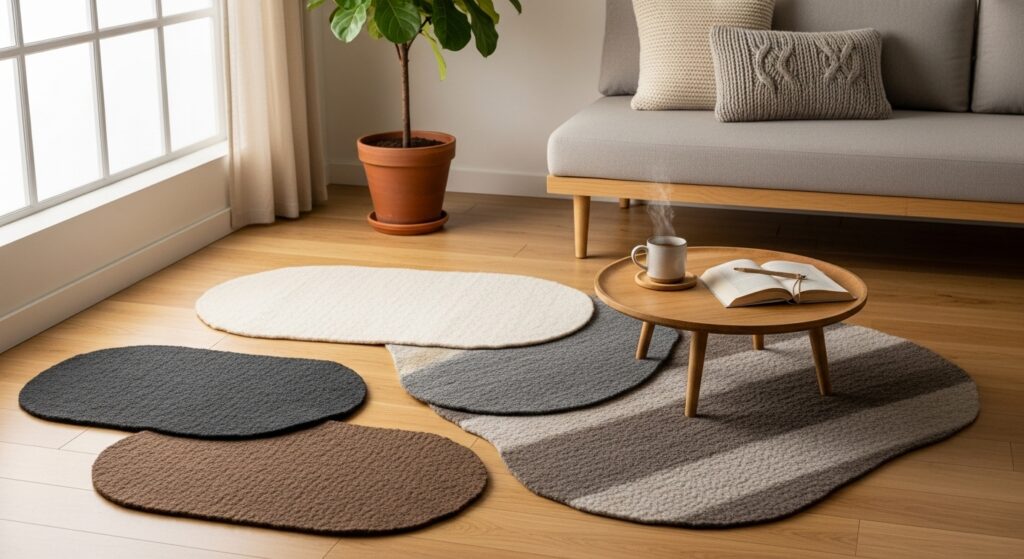In a world increasingly focused on sustainability and natural living, people are rediscovering traditional materials that blend performance with environmental responsibility. Among these innovations, wollmatten — wool mats made from natural fibers — are making a quiet but significant impact.
Combining age-old craftsmanship with modern applications, wollmatten are proving their worth in homes, farms, and even industrial design. These mats embody the principle that comfort and sustainability can coexist beautifully.
What Are Wollmatten?
The word wollmatten comes from German, meaning “wool mats.” Traditionally made from 100% sheep’s wool, these mats can take various forms — from soft floor coverings to dense insulation panels.
Thanks to wool’s natural qualities — such as moisture regulation, breathability, and durability — wollmatten serve many functions in daily life. They are eco-friendly, biodegradable, and naturally flame-resistant, making them an appealing choice for modern sustainable living.
Natural Properties of Wollmatten
1. Excellent Insulation
Wool fibers trap air within their structure, creating a natural barrier against heat and cold. Wollmatten are therefore ideal for thermal insulation in homes, keeping interiors warm in winter and cool in summer without relying heavily on artificial heating or cooling systems.
2. Moisture Regulation
Wool absorbs and releases moisture without feeling damp. This property helps maintain balanced humidity in indoor environments, enhancing air quality and overall comfort.
3. Acoustic Performance
Wollmatten can absorb sound vibrations, reducing echo and noise levels in rooms. For this reason, they are often used in recording studios, offices, and eco-buildings that prioritize acoustic comfort.
4. Natural Fire Resistance
Unlike synthetic materials, wool does not easily ignite. This makes wollmatten a safer option for home interiors, insulation, and public buildings.
Applications of Wollmatten
Home and Interior Design
Woll-matten are widely used as floor coverings, wall panels, and decorative layers. Their natural texture adds warmth and coziness to living spaces, while their neutral tones complement minimalist and modern aesthetics.
Construction and Insulation
In sustainable construction, woll-matten are installed in walls, roofs, and floors to regulate indoor temperature and reduce energy consumption. Builders appreciate them for being natural, recyclable, and non-toxic.
Gardening and Agriculture
Gardeners use wollmatten as soil covers or planting mats. They help retain soil moisture, suppress weed growth, and gradually decompose into the soil, enriching it with organic nutrients. In farms, they are also used as animal bedding, offering warmth and comfort to livestock.
Industrial and Acoustic Use
In industrial spaces, wollmatten provide soundproofing and vibration absorption. They are also used under heavy machinery or as packing material for delicate goods due to their cushioning ability.
Environmental Advantages
1. Renewable and Biodegradable
Made from wool — a renewable natural fiber — wollmatten decompose naturally without releasing harmful microplastics. They represent a shift toward responsible consumption and production.
2. Energy Efficiency
Using wollmatten in buildings reduces energy demand for heating and cooling, thereby lowering carbon emissions and contributing to global sustainability goals.
3. Health Benefits
Wool is hypoallergenic and resistant to mold, dust mites, and bacteria. Woll-matten help improve indoor air quality, making them a healthy choice for homes, schools, and offices.
Caring for Wollmatten
To maintain their durability and appearance, wollmatten should be treated with gentle care:
-
Vacuum regularly to remove dust and dirt.
-
Avoid soaking the mats; instead, clean spills immediately using a mild, wool-safe solution.
-
Air dry periodically to refresh fibers and prevent odors.
-
Rotate usage if used as rugs or floor coverings to ensure even wear.
With proper care, woll-matten can last for many years while retaining their natural beauty and functionality.
Challenges and Considerations
While woll-matten offer numerous benefits, there are a few factors to consider:
-
Cost: Natural wool mats can be more expensive initially than synthetic alternatives, though they last much longer.
-
Availability: High-quality wool mats are sometimes limited in supply, depending on regional production.
-
Installation: When used as insulation, they should be properly fitted to prevent compression and maintain efficiency.
Despite these minor challenges, the long-term environmental and comfort benefits make wollmatten a worthy investment.
Wollmatten in Sustainable Architecture
Sustainable architecture emphasizes materials that are both high-performing and low-impact. Wollmatten fit perfectly into this vision.
They not only meet technical insulation standards but also contribute to biophilic design — an approach that connects people with nature through materials and textures.
Architects increasingly choose woll-matten for eco-buildings, passive houses, and zero-energy homes, valuing their performance, recyclability, and minimal carbon footprint.
Cultural and Historical Context
The use of wool mats dates back centuries in colder climates, where communities relied on natural fibers for warmth and comfort. Modern wollmatten continue this legacy, blending traditional craftsmanship with sustainable innovation.
In many regions, the production of wool mats supports local shepherding traditions, small farms, and rural economies — making them not just environmentally responsible but also socially supportive.
Future of Wollmatten
The demand for eco-friendly and renewable materials is only growing. The future of wollmatten will likely include:
-
Hybrid materials combining wool with hemp, jute, or recycled fabrics for improved versatility.
-
Smart insulation systems that integrate wollmatten with temperature and humidity sensors.
-
Artisanal designs that turn natural wool mats into luxury home décor.
-
Expanded agricultural use, especially in regions focused on organic and regenerative farming.
These innovations will further strengthen wollmatten’s role as a key material in sustainable living.
Conclusion
Wollmatten represent more than just a household product — they embody a philosophy of balance between nature and modern life. Through their versatility, comfort, and ecological benefits, they have earned their place in homes, farms, and green architecture projects around the world.
Choosing wollmatten is not only a design decision but also a statement of responsibility — toward the planet, toward health, and toward a more sustainable future.





